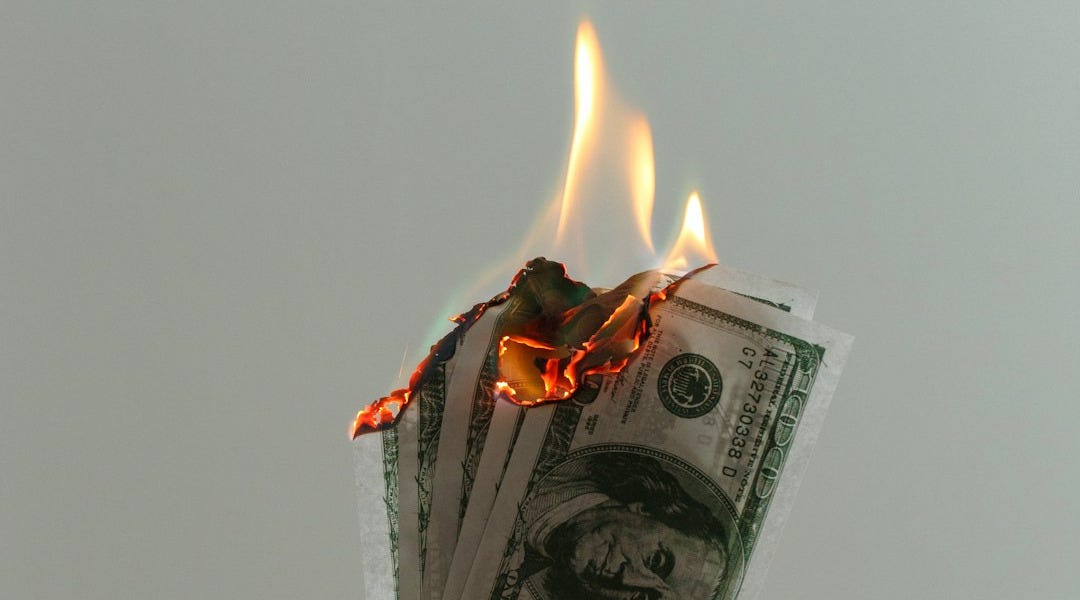 Photo by Robert Doisneau
Photo by Robert Doisneau
“Imprinted in the ice, stamped on the transparent crystal beneath the soles of my shoes, I saw a row of exquisitely beautiful human faces: a row of diaphanous masks, like Byzantine icons. They were looking at me, gazing at me. Their lips were thin and shrivelled, their hair was long, they had sharp noses and large, very brilliant eyes. That which was revealed to me in the sheet of ice was a row of marvellous images, full of a tender, moving pathos: as it were the delicate, living shadows of men who had been swallowed up in the mysterious waters of the lake… Beyond a doubt, I was looking at the images of some Russian soldiers who had fallen in an attempt to cross the river. The pitiful corpses, after remaining trapped as in a block of crystal all the winter, had been carried away by the first spring tides that followed the river’s liberation from its icy shackle. But their faces had remained imprinted on that sheet of glass, stamped on that clear, cold, greeny-blue crystal. They looked at me with serene attention, they seemed almost to be following me with their eyes.”
The Volga Rises in Europe by Curzio Malaparte
Curzio Malaparte wrote this passage in one of his despatches from the Eastern Front, where he served as a war correspondent for the Italian newspaper Corriere della Sera from June 1941 to July 1943. Born in Tuscany in 1898 as Kurt Erich Suckert, the son of a German business executive, the self-invented literary figure writing under the pseudonym “Malaparte” came to be celebrated for the surreal style in which he recounted his experiences during and after the Second World War. Published in Italy as a book in 1943 that appeared in English in 1957 as The Volga Rises in Europe, the articles hinted at the coming German defeat, leading to him being expelled from the front in September 1941 on the orders of the Nazi propaganda chief Joseph Goebbels.
The despatches foreshadow Malaparte’s twin masterpieces, Kaputt (1944) and The Skin (1949). Mixing eyewitness observations of the carnage of war and its shattering moral and social impact in Naples with Malaparte’s hallucinatory visions, they became national and international scandals and bestsellers. Kaputt,from the German word meaning “broken” or “destroyed”, was denounced for its blackly comic account of his wanderings across Nazi Europe, exchanging light banter at glittering soirées while hideous atrocities were being perpetrated a few streets away. The Skin was banned in Naples and placed on the Vatican’s list of forbidden books for its unsparing depiction of the abasement of the city during the Axis and Allied occupation, in which mothers and fathers “save[d] their skins” by selling their offspring as sex toys.
Malaparte adopted his surreal style of writing as a means of conveying the realities of war. In The Skin, one of the characters remarks: “It’s of no importance whether what Malaparte relates is true or false. That isn’t the question. The question is whether or not his work is art.” As the Italian writer and diplomat Maurizio Serra writes in this subtle, incisive and definitive biography: “Reality can be altered – who knew it better than he! – but one must respect and preserve the sense of what it points to: in this approach, Malaparte is perhaps without equal.”
Serra characterises Malaparte as “a voyeur, in a Proustian sense”, a label that is provocative and perceptive. The title of the first chapter of Kaputt, “Du Côté de Guermantes”, invokes the section of Remembrance of Things Past that explores the exquisite, decaying world of the Guermantes family. A dandy who dressed immaculately and enjoyed many dalliances with women in high society, Malaparte cultivated a life akin to that which Proust chronicled and dissected. In contrast with Proust, the object of Malaparte’s voyeurism was not the intricate mechanisms of pleasure and desire but destruction and violence. The nom de plume he adopted in 1925 is an inversion of Bonaparte in which good is replaced by bad, and strangely enough – for he had no core beliefs, religious or moral – his central preoccupation was with a problem of evil.
Although he had no enduring creed, Malaparte’s political attitudes were remarkably stable. As a schoolboy in a Catholic boarding school in Prato, Tuscany, he witnessed mass demonstrations by trade unionists and formed a lifelong sympathy for working people, which chimed with a visceral detestation of his own class. For Malaparte as for many in his generation in Italy, fascism began as the opposite of a reactionary movement. A hybrid of ultra-nationalism and revolutionary syndicalism, it expressed a virulent hostility to Europe’s bourgeois civilisation.
Malaparte was particularly attracted by the fascist rejection of humanitarian pacifism. Joining the Garibaldi Legion of volunteers in 1914, he served in the ferocious Alpine White War between 1915-18. The corpses and mass graves that litter his writings were not morbid fantasies but memories. He was fond of fighting duels and mesmerised by the sight of blood, even his own. His love of war left him with lasting scars. When he died in 1957 after a visit to China, it was from lung lesions that can be traced back to being gassed at the front in 1918.
The celebration of violence in Malaparte’s work is one of its most prominent features. In the columns of La Conquista dello Stato, an inflammatory magazine he founded and edited, he cheered on the fascist squadristi, gangs of thugs who attacked left-wing workers and intellectuals and were implicated in the kidnap and murder of the socialist leader and anti-corruption campaigner Giacomo Matteotti in June 1924. In 1923, he declared: “In the same way as we have burned the houses and dispersed the families of those who were, out of ignorance and cowardice, hostile to the living spirit of our nation, we will burn the houses and disperse the families of those who are hostile to it out of culture and intelligence.” He was on intimate terms with many of these families. Quite a few collaborated with fascism, but that did not endear them to him: they were part of an elite he despised. Like the Italian futurist artist Filippo Tommaso Marinetti, co-author of the 1919 Fascist Manifesto, his goal was not to prop up the European order but to raze it to the ground.
One source of Malaparte’s disgust with European elites may have been his experience as a junior member of the Italian delegation at the 1919 Paris Peace Conference. Rather than working together to rebuild a shattered continent, the victors fought over the spoils of war, creating the conditions for the next global conflict 20 years later. He went on to produce Coup d’État: The Technique of Revolution, first published in 1931 and still in print. A forensic analysis of the seizure of power in Russia, Spain, Italy and other countries, the book included a portrait of Hitler as calculating, manipulative and (deploying a misogynistic trope of the time) effeminate. Mussolini found the book diplomatically inconvenient, and Malaparte was exiled to the island of Lipari in 1933, the first of several spells of enforced detention. Any hardship he experienced was soon eased by the intervention of friends close to the government. Between 1937 and 1940, he constructed a strikingly beautiful home on the cliffs of Capri, the Casa Malaparte, “a house like me” – elegant, isolated and extremely difficult to enter.
As imaginative testimonies to the horrors of war, Malaparte’s novels are unsurpassed. They are also vehicles for his narcissism. Kaputt has him helping Jews escape the Iași pogrom in Romania in June 1941, one of the worst such episodes in the war, but there is no evidence he was present at the massacre. In The Skin, he engages in conversation with men crucified to trees on a Ukrainian roadside. “Grief-stricken and weeping bitterly,” he offers to un-nail them from their crosses. The men reject his offer and ask to be shot, but he fumbles with his gun, his horse bolts and he leaves them cursing and spitting on him. His depiction of Naples has been compared with that of Norman Lewis in Naples ’44, but unlike Lewis he focuses on his own humiliation rather than the suffering and resilience of the population. However ghastly the scene, he is always at the centre of it.
Insulated from human feeling by his invincible self-possession, Malaparte placed his own survival over any loyalty. Early drafts of Kaputt, written when it seemed the Nazis would win the war, are believed to have contained flattering portraits of mass murderers, such as the monstrous governor of Nazi-occupied Poland, Hans Frank. As the war tilted in favour of the Allies the chameleon changed its colour, the manuscript was revised and thereafter Malaparte distanced himself from fascism. There may have been an element of genuine disillusionment in his move. None of the interwar revolutionary movements were as radical as he wished. In an unfinished novel, The Kremlin Ball, based on a trip to the USSR he made in 1929, he made clear his disgust for the Soviet regime. He was unconcerned by its use of terror. His revulsion was aesthetic rather than moral. With its sordid intrigues and struggles for status, he found the Soviet elite little different from the haute bourgeoisie he loathed (and lived comfortably among) in Europe.
His final political enthusiasm was Maoism. In his posthumously published book Io, in Russia e in Cina (Me in Russia and China), he reported meeting Mao in 1956 and finding him “serene, sweet, deeply kind”. As with his early infatuation with Mussolini, he could not resist the charm of the tyrant. This did not prevent him achieving respectability of a sort for which he had perhaps always longed. Not long before he died, he was admitted to the Italian Communist Party, which had hitherto denied him membership because of his fascist past, and received into the Catholic Church.
Why read Malaparte today? The answer cannot be only for the unnerving brilliance of his postmodern prose. A cruel and perverse nature enabled him to access an ugly truth. A propensity for inhuman violence is integral to European civilisation. He rightly dismissed the notion that totalitarianism originated outside of the West – Russian communism in “oriental despotism”, for example. Twentieth-century fascism, Nazism and communism were all quintessentially European projects. The impulse to remake the world on a new model, often seen as a mark of the superiority of the West, is the source of its passion for mass killing.
Malaparte understood the allure of evil because he was bewitched by it himself. The celebration of violence and destruction in his work betrayed a contradiction in the European mind. Judged by liberal standards, liberal societies are irredeemably flawed; but when they are rejected because they flout their own values, the result is tyranny and bloodshed on a grandiose scale. Excited by this paradox, Malaparte embraced the most anti-liberal forces of his time. Here he anticipated 21st-century hyper-liberals, who – without any of his self-awareness or lacerating irony – seek a remedy for inner emptiness by identifying with terroristic anti-Western movements. In a turn that would have gratified and entertained him, this demonic jester must be read as one of the most penetrating writers of our age.
Malaparte: A Biography Maurizio Serra, translated by Stephen Twilley
New York Review of Books
736pp, $39.95
[See also: The war to end all peace]
Content from our partners
This article appears in the 07 May 2025 issue of the New Statesman, The Peace Delusion
.png)





